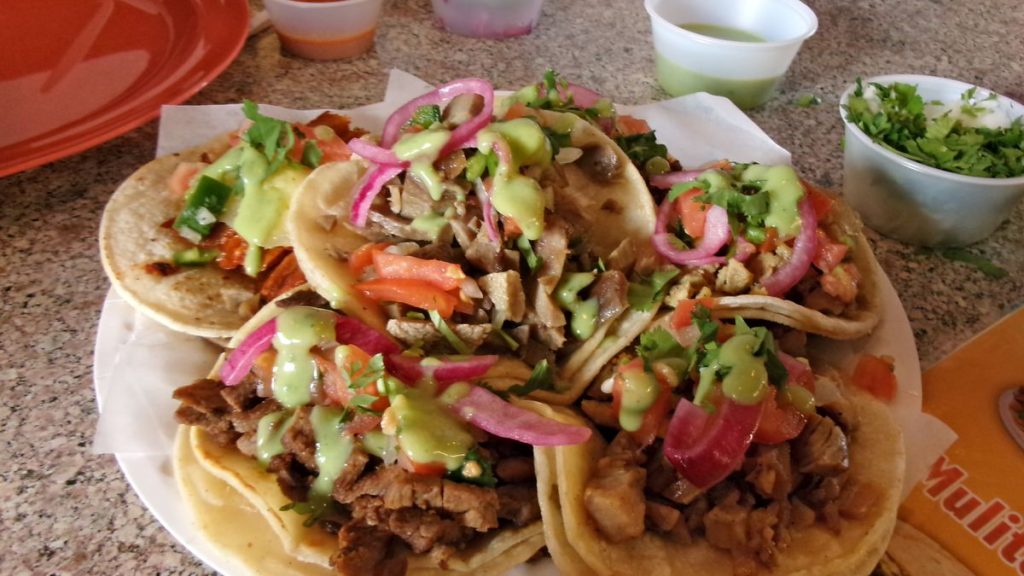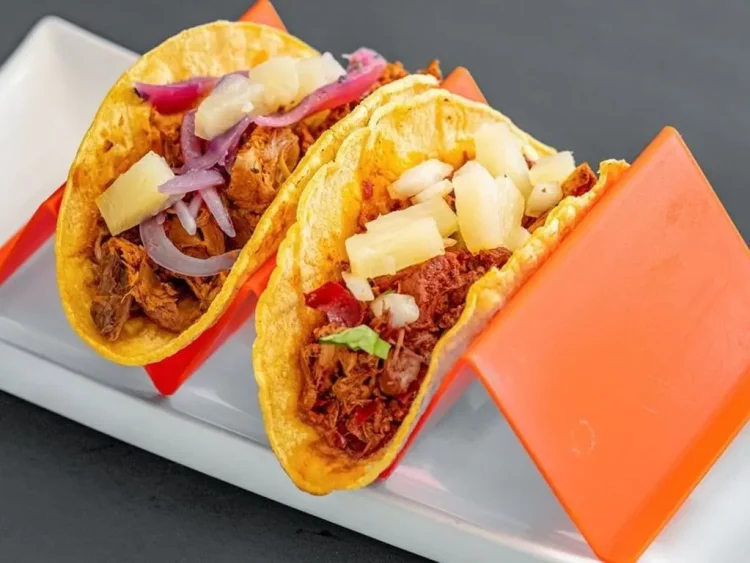When we talk about culinary adventures, few destinations can compete with the richness of flavors and diversity found in Mexico and Peru. These two countries are not only cultural powerhouses with vibrant histories and stunning natural scenery, but they also offer some of the most unique and unforgettable food experiences in the world. The food cultures of Mexico and Peru are deeply intertwined with their histories, their indigenous populations, and their evolving landscapes. From Mexico’s zesty salsas and rich moles to Peru’s centuries-old culinary heritage, this journey will transform the way you experience food.
Mexico’s Flavors: From Tacos to Mole, Why Mexican Cuisine is a Traveler’s Dream
Mexico’s cuisine is arguably one of the most influential in the world. Known for its bold and diverse flavors, it combines indigenous ingredients, colonial influences, and modern twists that create an exciting and layered culinary experience. Whether you’re enjoying a simple street taco or indulging in a complex mole, Mexican food reflects a deep connection to the land and its cultural evolution.
The Magic of Tacos
No discussion of Mexican cuisine would be complete without mentioning tacos. These portable, versatile dishes are found in every corner of the country, from bustling street vendors in Mexico City to gourmet restaurants in Oaxaca. The magic of tacos lies in their simplicity—soft corn tortillas filled with a variety of fillings, from slow-cooked meats like carnitas (braised pork) or barbacoa (slow-cooked lamb) to vegetarian options like sautéed mushrooms or nopales (cactus). Tacos are always served with fresh salsas, cilantro, onions, and a squeeze of lime, making each bite burst with flavors.
The street food culture in Mexico is truly second to none. Cities like Mexico City, Oaxaca, and Guadalajara are filled with taco stands that serve unique regional variations. For instance, Mexico City’s tacos al pastor, with their marinated pork roasted on a vertical spit, offer a taste of the capital’s vibrant food scene. Oaxaca, on the other hand, is known for its tlayudas—large, crispy tortillas topped with cheese, avocado, and grilled meats.
Mole: A Rich, Complex Legacy
One of the most iconic dishes in Mexican cuisine is mole, a rich and complex sauce made from a blend of chiles, chocolate, nuts, spices, and sometimes even fruits. Mole is a true labor of love, taking hours to prepare as the ingredients are roasted, ground, and simmered into a thick, aromatic sauce. Often served over chicken or turkey, mole has deep historical roots in Mexico, dating back to pre-Hispanic times when ancient civilizations used chiles and chocolate in their cooking.
Oaxaca is considered the mole capital of the world, where the dish is elevated to an art form. The Oaxacan version, known as mole negro, is particularly famous for its smoky flavor and the use of several varieties of chiles. A trip to Oaxaca is incomplete without tasting this dish in one of the region’s traditional markets or family-owned restaurants.
Regional Diversity
What makes Mexican cuisine so unique is its regional diversity. In the Yucatán Peninsula, the food is heavily influenced by the Maya culture, where dishes like cochinita pibil (slow-cooked pork) are cooked in banana leaves, lending them a rich, smoky flavor. On the Pacific coast, seafood takes center stage with ceviche, a dish of raw fish marinated in citrus juices, and grilled fish tacos. Each region offers a unique culinary experience that reflects the people, climate, and traditions of the area.
Peru’s Gastronomic History: The Influence of Incan Heritage and Modern Innovation on Peruvian Food
Peru’s food scene is an exciting blend of ancient traditions and modern culinary creativity. The country’s geographic diversity, ranging from coastal deserts to high-altitude mountains and the lush Amazon rainforest, provides an abundance of ingredients that have long been central to Peruvian cooking. But it’s not just the abundance of ingredients that make Peruvian food so exciting—it’s the deep-rooted connection to the past and the way the country’s modern chefs have embraced this heritage to create innovative dishes that have earned global recognition.

The Legacy of the Incas
Peruvian cuisine can trace many of its roots to the ancient Inca civilization, which flourished in the Andes before the Spanish conquest. The Incas introduced important agricultural innovations, such as terraced farming and the domestication of potatoes, corn, and quinoa. Peru is home to over 3,000 varieties of potatoes, and the ways in which they are prepared—whether boiled, fried, or turned into hearty stews—demonstrate the versatility of this humble yet essential ingredient.
One of the most well-known dishes that reflects the influence of the Incas is cuy—guinea pig, which has been a source of protein in the Andean diet for centuries. While it may be considered exotic for some, cuy is traditionally roasted or fried and is still enjoyed in many parts of Peru, particularly in the highlands.
The Rise of Nikkei Cuisine: Japan Meets Peru
One of the most exciting culinary developments in Peru in recent decades is the emergence of Nikkei cuisine, a fusion of Japanese and Peruvian culinary traditions. After Japanese immigrants arrived in Peru in the late 19th century, they began incorporating local ingredients into their cooking, giving birth to a unique fusion style. This style of cooking is most evident in dishes like tiradito (similar to ceviche) with Japanese influences, and anticuchos (grilled skewers) marinated with miso-based sauces.
Peru’s gastronomic boom has brought Nikkei chefs to the international stage, with Lima’s central restaurant, led by chef Virgilio Martínez, earning recognition as one of the best in the world. The blending of Japanese techniques with Peruvian ingredients creates a gastronomic experience that surprises and delights.
Top Culinary Experiences: Must-Try Dishes and Where to Enjoy Them in Both Countries
If you’re a true food lover, then Mexico and Peru should be at the top of your culinary travel list. Both countries offer endless opportunities to indulge in delicious, authentic dishes that will leave you craving more. Below are some of the must-try dishes and the best places to experience them in both countries.
Mexico’s Must-Try Dishes
- Tacos al Pastor in Mexico City: Head to the taquerias of Mexico City for tacos al pastor, a must-try street food experience. Visit the famous El Tizoncito, where the flavors are legendary.
- Mole in Oaxaca: Oaxaca is the birthplace of mole, and you can’t leave without tasting this iconic dish. Try it at Casa Oaxaca or Templo in the heart of the city.
- Ceviche in Acapulco: For a refreshing and zesty dish, try ceviche on the Pacific coast of Mexico, particularly in Acapulco, where the seafood is fresh and plentiful.
Peru’s Must-Try Dishes
- Ceviche in Lima: Lima’s ceviche is world-renowned, made with freshly caught fish and tangy citrus. Visit La Mar or Pescados Capitales for a top-tier ceviche experience.
- Lomo Saltado in Cusco: A fusion of Chinese and Peruvian flavors, lomo saltado is a stir-fry of beef, potatoes, and rice. You can try this delicious dish at the iconic Cusco restaurant, Chicha by Gastón Acurio.
- Causa Limeña in Lima: A dish made of mashed potatoes and avocado, filled with seafood or chicken, causa is a refreshing and hearty Peruvian classic. Head to Central in Lima for a refined version of this dish.
Conclusion: A Culinary Journey You’ll Never Forget
Mexico and Peru offer travelers more than just beautiful landscapes and rich histories; they provide an immersive culinary experience that will transform the way you think about food. The flavors, the techniques, and the stories behind each dish reflect the deep cultural heritage and innovative spirit of these countries. From the bustling taco stands of Mexico to the modern gastronomic wonders of Lima, every meal tells a story of tradition, evolution, and creativity. For any food lover, these countries are truly a dream come true.





















